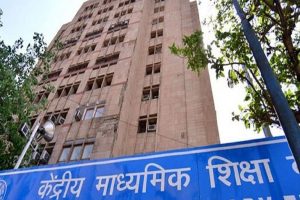Sunday morning all newspapers, electronic and print media were busy showing coverage on the sexual harassment allegations raised against the Chief Justice of India. The complainant, a former Supreme Court staff, as clarified by the Secretary-General, who was of the level of lower division clerk, had sent the complaint in the format of an affidavit and with evidence, as reported in the newspaper. It was circulated to 22 judges of the Court. Post reporting of the incident, the procedure of handling such complaints and independence of the judiciary was being evaluated at different levels by the media. There were also talks going on the larger picture behind such complaint to deactivate the office of great prestige and pride of India too in view of the sensitive cases coming up for hearing. Earlier too, media attention happened to the office of CJI when the present Hon’ble Chief Justice was part of the four judges group who had questioned the roaster allocation by former Chief Justice of India for politically sensitive cases.
The above-mentioned allegations were published on four website-The Leaflet, The Scroll, The Wire, The Caravan. The CJI while denying the charges has already clarified that charges against him will be examined by other senior judges & not by himself. The special bench of the court on Saturday, April 20, 2019, did not pass any judicial order when the matter was mentioned before the special bench that sat & left it to the wisdom of the media to decide on publication. The article is not on coverage of what is already in circulation but an initiative to look at mechanism available within the Supreme Court to deal with prevention of sexual harassment at the workplace.
THE GSICC
In exercise of the powers conferred under the regulations drafted in the year 2013, the Gender Sensitisation Internal Complaint Committee (GSICC) was constituted under Gender Sensitisation and Sexual Harassment (Prevention, Prohibition and Redressal) Regulations, 2013 (“Regulation 2013”). These Guidelines were renamed as Gender Sensitisation and Sexual Harassment at Supreme Court (Prevention, Prohibition and Redressal) Regulations, 2015 (“Regulation 2015”). Sitting women judge heads the GSICC. The GSICC of the Supreme Court inquires into complaints of sexual harassment against employees of the court registry. The GSICC was reconstituted vide order 13.11.2018 by the Hon’ble Chief Justice of India with the below-mentioned members.
| MEMBER | DESIGNATION |
| Hon’ble Ms Justice Indu Malhotra | Chairperson |
| Hon’ble Mr Justice R. Subhash Reddy | Member |
| Mrs Seema Rani Dua | Additional Registrar, (Member-Secretary) (Officer in service of the Supreme Court of India) |
| Ms V. Mohana | Senior Advocate (Member) [Senior Member of the Supreme Court Bar under Clause 4(2)(b)] |
| Ms Priyanka S. Mathur | (Advocate Member) (Representative of the Supreme Court Bar Association under Clause 4(2)(c)) |
| Mr F. I. Choudhury | (Advocate Member)[Representative of the Supreme Court Bar Association under Clause 4(2)(c)] |
| Ms Anushree Prashit Kapadia
|
(Advocate Member)[Representative of Supreme Court Advocate on Record Association under Clause 4(2)(d)] |
| Ms Abha Singal Joshi
|
Former Director, Member Multiple Action Research Group [Nominee of Hon’ble the Chief Justice of India under Clause 4(2)(f)] |
| Mr. P.P. Malhotra | Senior Advocate Member and Former Additional Solicitor General (Senior Member of the Supreme Court Bar Association) [Nominee of Hon’ble the Chief Justice of India under Clause 4(2)(h)] |
| Prof. (Dr.) Mrinal Satish
|
Professor, National Member Law University [Nominee of Hon’ble the Chief Justice of India under Clause 4(2)(h)] |
On 09.12.2013 the first meeting of Supreme Court Gender Sensitization and Internal Complaints Committee (GSICC) headed by Hon’ble Mrs Justice Ranjana Prakash Desai was held in the Supreme Court’s premises to work out the modalities for the effective implementation of the Regulation 2015 and to take the decision on related issues.
These regulations were published as a comprehensive code for prevention of sexual harassment of women within precincts of Supreme Court of India and for redressal of any complaint lodged in Supreme Court of India. The aggrieved women is defined in the 2013 Regulation as:
“…means in relation to the Supreme Court, any female of any age, whether employed or not, who claims to have been subjected to any act of sexual harassment by any person in Supreme Court of India precincts but does not include any female who is already governed by Supreme Court Service regulations ”
The aggrieved women as defined in clause 2(a) of the Regulation 2013 may make a complaint in writing of sexual harassment at Supreme Court of India precincts to the GSICC through its Member Secretary. The Complaint shall be sent either by registered post, courier, speed post or e-mail. It can also be handed over personally at the above-said address. The Handbook for GSICC Regulations has been created for awareness of legal fraternity, clerks of the advocates, employees of the Registry of Supreme Court of India.
The Respondent is defined in the 2013 Regulation as:
“…any person against whom the aggrieved women has made a complaint under the present regulations”
The Supreme Court means under the 2013 Regulation as:-
“..means the whole premises of the Supreme Court including the court block, open grounds, parking, old and new chamber blocks, libraries, canteen, barrooms, health centres and/or any other premises under the control of Hon’ble Chief Justice of India. ”
The provision of the Regulation 2013 does not bar any court from taking cognizance from any offence punishable under any enactment or law. [Regulation 19(2)]
Inquiry under GSICC Regulations 2015 means inquiry by the formation of the Internal Sub Committee, which would comprise of three members-with majority being women and one outside external member. [Regulation 9]. The Internal Sub Committee- is a fact-finding committee. The aggrieved women can file a written complaint either in person or through a volunteer with all supporting documents, transcripts etc. [Regulation 8].
The present news has made reference to the Judges (Inquiry) Act, 1968. Any inquiry against a sitting judge can only happen under the Judges (Inquiry) Act, 1968. The Preamble of the Act mandates an Act to regulate the procedure for investigation or proof of misbehaviour or incapacity of a judge of a Supreme Court or a High Court, which as per definition under the Act includes Chief Justice of India and of the High Courts. It mandates that only the CJI can constitute a probe panel. Any action to remove the judge concerned can only be initiated, if the panel finds him or her guilty. The report is then forwarded to the CJI, who sends the recommendation to the President. The Constitution allows a judge to be removed only by an order of the President based on an impeachment motion passed by both Houses of Parliament.
The GSICC Regulations, 2013 and 2015 they did not extend or apply to either sitting or retired judges of the apex court. In 2014, a panel consisting of two eminent jurists — Senior advocates Mr Fali Nariman and the late Mr. PP Rao called for devising a mechanism to provide redressal to those who levelled sexual harassment allegations against sitting judges. As reported online, the bench headed by the then CJI P Sathasivam had nominated the two to suggest measures on how to deal with complaints of such nature against sitting and retired judges. Present Chief Justice of India, Hon’ble Mr Ranjan Gogoi as reported in media, was also part of that bench.
Another development around the news was suo motu cognizance, which is a Latin term generally means an action taken by a government agency, court or other central authority on their own apprehension. A court takes a suo motu cognizance of a legal matter when it receives information about the violation of rights or breach of duty through media or through a third party’s notification by letter, telegram, or other means of communication. Suo moto actions are symbols of activism of judiciary.
Conclusion
The veracity of the facts around the incident would eventually see the daylight but it raises an important question to ponder on the need of the hour to introspect the laws whether they are providing complete prohibition, protection and redressal mechanism for women against any workplace discrimination, harassment at all level not only within the legal system but also beyond and the nature of their implementation of such laws at the ground level too needs deliberation.
References
- URL: https://www.sci.gov.in/pdf/GSICC/report%20gsicc%2008092014.pdf
- The Handbook on Sexual Harassment at the Workplace (Prevention, Prohibition and Redressal) Act, 2013 with the GSICC Regulations, 2013.
- The GSICC Regulations, 2015
- The Judges (Inquiry) Act, 1968
- The Annual Report GSICC, 2018













In none of the references listed the major lacuna is glaringly missing. That is ‘safeguard for the members of the higher functionaries from being maligned or being
subjected to vilification by false and frivolous complaints.
This provision exists in the case of the President of India
as well as Governors of the States. CJI is also required to be protected. The required verification of good conduct
and integrity is undertaken and certified beyond doubt
before the appointment .